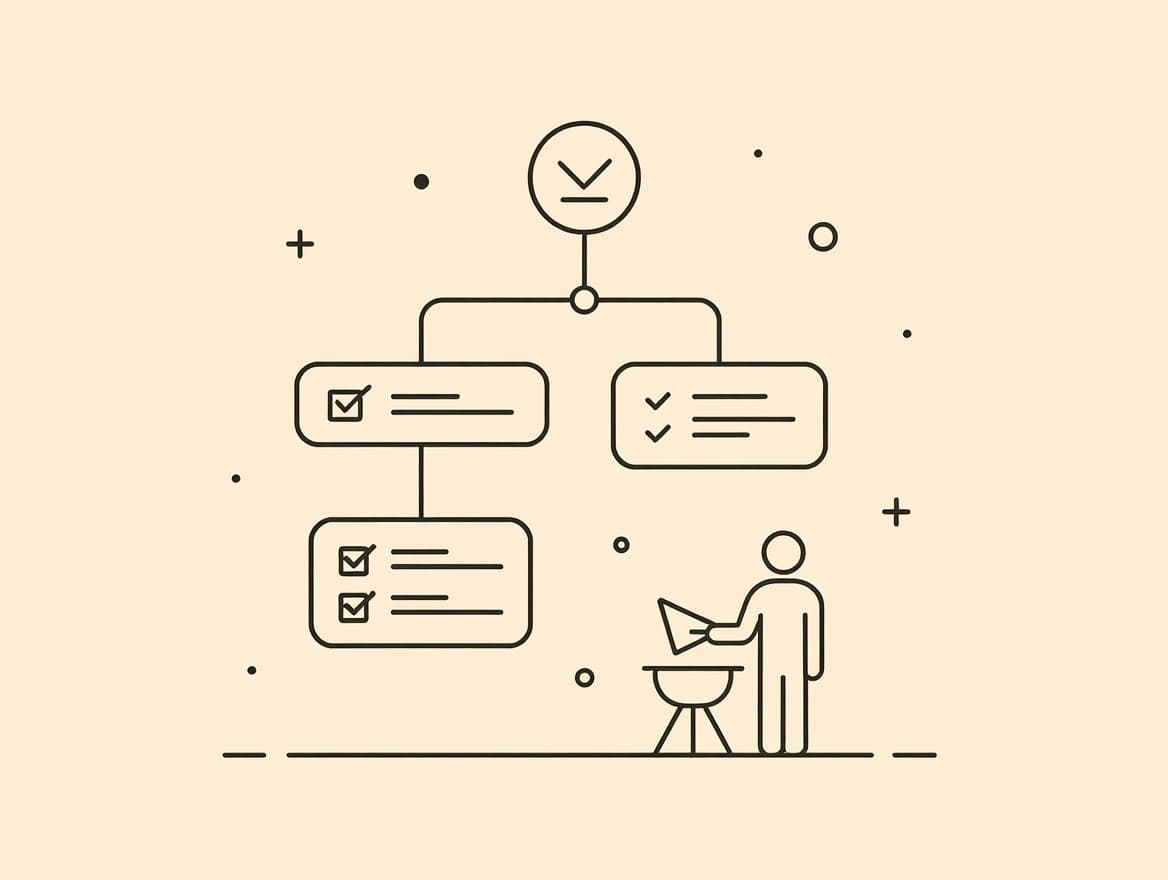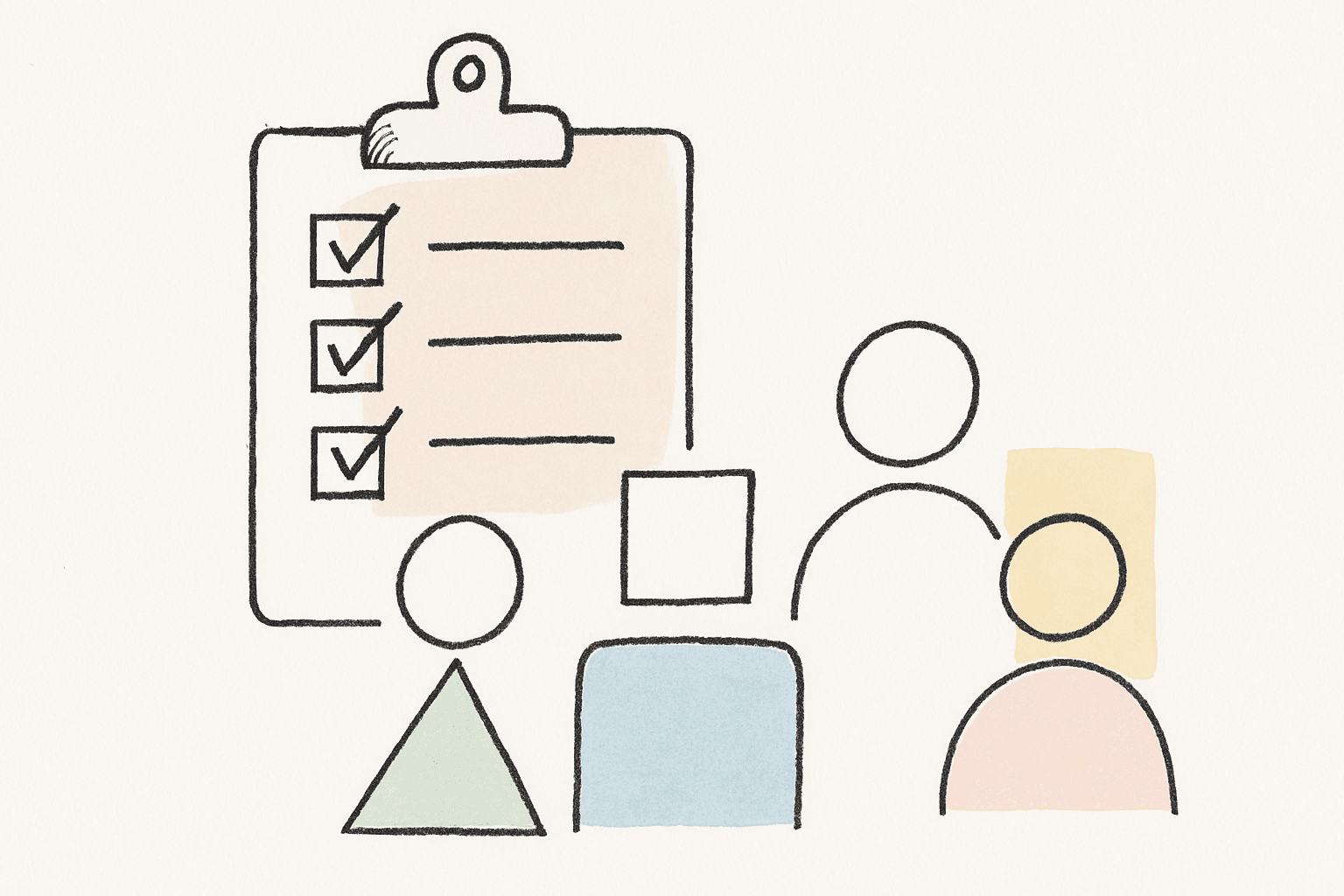CPT Code 97153: Complete Guide for RBTs

As an RBT, aba billing code 97153 is the bread and butter of your daily practice. This code covers the direct, hands-on work you do with clients - the heart of what makes ABA therapy effective. But here's the thing: while you might be great at helping kids learn new skills, understanding all the billing rules and documentation requirements can feel like learning a whole new language.
Whether you're cramming for your RBT exam or you've been in the field for a while, this guide will walk you through everything you need to know about CPT code 97153. We'll cover when to use it, how to document it properly, and - most importantly - how to avoid the mistakes that could put your career at risk.
What CPT 97153 Actually Means for Your Daily Work
CPT code 97153 covers what you do most of the time: implementing behavior protocols that your BCBA has already designed. Think of it as the billing code for those sessions where you're following the game plan, not creating it.
Here's what makes this code special: it's all about protocol implementation. You're not making clinical decisions on the fly or modifying treatment plans mid-session. Instead, you're consistently delivering interventions exactly as your supervisor outlined them.
According to current ABA coding guidelines, 97153 cpt code specifically requires:
- Direct, one-on-one treatment delivery
- Following established protocols without modification
- Services provided in 15-minute increments
- Supervision by a qualified healthcare professional
This code applies to most of your typical sessions. Whether you're working on communication goals, addressing challenging behaviors, or teaching daily living skills, you're likely providing 97153 services. The key is that you're implementing, not inventing.
Who Can Provide 97153 Services (And How Supervision Really Works)
As an RBT, you're the primary provider of aba billing code 97153 services. But the rules around supervision are more nuanced than you might think - and they're crucial to understand.
Your Role as the RBT:
- Implement behavior interventions exactly as written
- Collect data continuously during sessions
- Follow prompting and reinforcement protocols precisely
- Report progress and concerns to your supervisor
The Real Deal on BACB Supervision Requirements: Your BCBA must provide ongoing supervision for at least 5% of your total service hours each month. This breaks down to some specific requirements:
- At least 50% of supervision must be face-to-face (or via video conference)
- Under restricted conditions, 67% must be in-person
- Direct observation of your work must occur regularly
Understanding the 15-Minute Rule: All 97153 cpt code services are billed in 15-minute units. Clinical time is what counts - not prep, cleanup, or documentation time. Here's how the math works:
- 8-22 minutes = 1 billable unit
- 23-37 minutes = 2 billable units
- 38-52 minutes = 3 billable units
One thing that surprises new RBTs: your BCBA doesn't need to hover over you during every session. They maintain oversight through regular supervision meetings, direct observation, and ongoing plan review.
Where You Can Deliver 97153 Services
CPT 97153 services happen wherever your clients need them, but location definitely affects how you bill and document:
Common Service Settings:
- Family homes (probably where you'll spend most of your time)
- ABA clinics and centers
- Schools and educational settings
- Community locations during generalization work
The Telehealth Question: This is where things get tricky. Telehealth coverage for 97153 varies significantly based on state laws and individual insurance policies. Most payers still prefer in-person services for this code since it requires direct, hands-on interaction. Always check with your supervisor about your specific payers' policies.
Insurance Variations You'll Encounter: Different insurance companies have their own quirks:
- Medicaid programs often require prior authorization
- Private insurance may cap session frequency or total hours
- Some plans have specific documentation format requirements
- Others require certain modifiers for school-based services
The bottom line? Never assume - always verify requirements with your clinical team before starting with new clients.
What Actually Happens During a 97153 Session
A well-run aba billing code 97153 session follows a rhythm that maximizes learning while staying true to the behavior plan:
Pre-Session Setup (5 minutes):
- Review your data sheets and materials
- Greet your client and quickly assess their readiness to work
- Set up your environment and prepare reinforcers
Core Implementation Phase (30-45 minutes):
- Run through targeted interventions exactly as specified
- Use the prompting strategies your BCBA outlined
- Deliver reinforcement according to the written schedule
- Take data continuously (not just at the end!)
Session Wrap-Up (5-10 minutes):
- Pack up materials and clean workspace
- Complete any remaining data collection
- Give family a quick progress update
- Set up for your next visit
The Golden Rules:
- Stick to protocols like your certification depends on it (because it does)
- Document anything unexpected immediately
- Use only approved strategies - save your creative ideas for supervision
- When in doubt, ask your supervisor later rather than improvise
Remember, consistency is your superpower as an RBT. Your job isn't to be innovative - it's to be reliable.
Your Documentation Survival Guide for 97153
Proper documentation isn't just paperwork - it's your professional protection and your client's progress record rolled into one. Every 97153 cpt code session needs these elements:
Non-Negotiable Documentation Elements:
✓ Session Logistics
- Exact start and stop times (not rounded!)
- Total minutes of direct service provided
- Number of billable units claimed
- Specific location where services occurred
✓ Clinical Information
- Which behavior plan goals you targeted
- Specific interventions you implemented
- Prompting levels you used throughout
- Reinforcement schedule you followed
✓ Objective Data Collection
- Measurable data on target behaviors
- Client's specific responses to interventions
- Any unexpected behaviors or occurrences
- Progress toward session objectives
✓ Signatures and Approvals
- Your signature and date as the service provider
- Supervisor signature (when required by payer)
- Parent/caregiver signature (when appropriate)
Documentation Mistakes That'll Get You in Trouble:
- Writing subjective opinions ("Johnny had a great day!")
- Forgetting to document exact service times
- Missing which specific goals were addressed
- Incomplete or missing data collection records
- Using vague language instead of specific descriptions
Keep it objective, keep it measurable, and keep it focused on what actually happened during your session.
Billing Mechanics: Units, Modifiers, and Avoiding Headaches
Understanding how aba billing code 97153 actually gets processed helps you document correctly and avoid claim denials:
What Counts as Billable Time: Only direct therapy minutes count - not:
- Travel between locations or clients
- Preparation time or material setup
- Casual conversations with parents
- Documentation or data entry time
- Breaks or interruptions in service
Common Modifiers for 97153: Different situations require different modifiers, and current billing guidelines specify when to use them:
- When a qualified healthcare professional delivers the same protocol, use 97153 with appropriate modifiers
- State-specific modifiers may apply for school-based services
- Telehealth modifiers (when coverage is available)
Your supervisor will tell you exactly which modifiers to use based on your location and each client's insurance requirements.
Avoiding Common Scheduling Conflicts:
- Never overlap 97153 with other CPT codes for the same time period
- Ensure clear gaps between different types of services
- Document cancellations and makeup sessions according to policy
- Track total weekly and monthly hours to stay within insurance limits
Most insurance plans have daily or weekly caps on 97153 units. Stay within these limits to avoid automatic claim denials.
How 97153 Differs from 97155 and 97154
Getting these codes straight prevents billing errors and scope-of-practice issues:
CPT 97153 (Your main code):
- RBT implements established protocols
- No real-time modifications to treatment plans
- Most common code for standard therapy sessions
- Lower complexity, consistent implementation
CPT 97155:
- BCBA provides direct treatment
- Can modify protocols during the session
- Used when immediate clinical decisions are needed
- Higher reimbursement rate due to advanced training
CPT 97154:
- Group treatment with multiple clients
- RBT can provide under BCBA supervision
- Lower reimbursement per client
- Less common in most ABA programs
When Codes Might Change Mid-Session: Sometimes you'll need to switch from 97153 to 97155 if:
- Your client shows unexpected responses requiring immediate protocol changes
- A crisis situation needs your BCBA to step in
- Complex clinical decisions become necessary
Always document code switches clearly and get supervisor approval before billing.
Common Mistakes That Could End Your Career
These errors happen more often than you'd think, and they can have serious consequences:
Protocol Drift:
- The Problem: Gradually changing how you implement interventions without realizing it
- The Solution: Weekly protocol review with your supervisor and occasional self-recording
Time Tracking Errors:
- The Problem: Accidentally billing for prep time, breaks, or non-service activities
- The Solution: Use exact timers and detailed session logs
Scope Creep:
- The Problem: Making clinical decisions that belong to your BCBA
- The Solution: When in doubt, stick to the written plan and ask questions later
Documentation Shortcuts:
- The Problem: Notes that don't actually support the billed service
- The Solution: Use your clinic's templates and include specific, measurable information
Poor Communication:
- The Problem: Not reporting significant client changes to your supervisor
- The Solution: Establish clear communication protocols with your team
The best protection is staying within your scope, documenting everything, and maintaining regular supervision contact.
Real-World Examples That Make Sense
Example 1: Communication Training Session 6-year-old client working on manding skills
"Implemented mand training protocol for 45 minutes (3 units aba billing code 97153). Presented 20 opportunities for client to request preferred activities using 'I want [item]' format. Used most-to-least prompting sequence per protocol. Client responded independently on 12/20 trials (60% accuracy), showing improvement from last week's 45%. Provided token reinforcement on FR3 schedule as specified. Client remained engaged throughout session with no challenging behaviors observed."
Example 2: Behavior Reduction Focus 8-year-old working on reducing attention-seeking behaviors
"Delivered differential reinforcement protocol targeting inappropriate vocalizations during 30-minute session (2 units 97153 cpt code). Implemented planned ignoring for non-functional sounds while reinforcing appropriate communication attempts with praise and preferred access. Target behavior occurred 6 times (down from 12 in previous session). Client made 4 appropriate requests that were immediately reinforced. Session concluded as planned with positive parent feedback."
Both examples show objective measurement, specific protocol implementation, and clear data that supports the billed service time.
Your Quick Reference Checklist
Before Starting Each Session:
- Review current behavior plan and any updates
- Prepare all materials and fresh data sheets
- Check recent progress notes or supervisor messages
- Confirm any changes with your supervisor if needed
During Every Session:
- Start session timer for accurate billing
- Follow written protocols without deviation
- Take continuous data on all target behaviors
- Note any unusual responses or environmental factors
After Each Session:
- Complete data collection immediately
- Calculate correct billing units based on service time
- Write objective, specific session notes
- Securely store all confidential materials
Red Flags to Report Right Away:
- Any safety concerns for client or others
- Significant changes in client behavior patterns
- Family requests for protocol modifications
- Equipment problems affecting service delivery
Keep this checklist handy until these steps become second nature.
Frequently Asked Questions
Does my BCBA need to be there during my 97153 sessions? No, but they must provide at least 5% supervision of your total service hours monthly. This includes direct observation of your work and regular face-to-face meetings to ensure you're implementing protocols correctly.
How detailed should my session notes actually be? Detailed enough that another RBT could understand exactly what happened and potentially continue the session. Include specific data, interventions used, and measurable client responses. Avoid subjective terms like "good behavior" or "bad day."
Can parents or siblings be part of 97153 sessions? Yes, when it's written into the treatment plan. Some insurance companies require parent training to be billed under different codes, so check with your supervisor about how to handle family involvement.
What if I need to cancel or end a session early? Follow your agency's cancellation policy and document the specific reason (client illness, family emergency, etc.). Never bill for time you didn't provide. Schedule makeup sessions only with supervisor approval.
How do I handle new behaviors that aren't in the current plan? Document new behaviors objectively and report them to your BCBA immediately. Continue following existing protocols for targeted behaviors unless specifically directed otherwise. Creating new interventions is outside RBT scope of practice.
Is telehealth an option for 97153 services? Coverage varies significantly by payer and state. Most insurance companies still prefer in-person delivery for 97153 since it requires hands-on interaction. Always verify with your supervisor before providing remote services.
Mastering aba billing code 97153 is essential for every successful RBT. This code represents the core of what you do - implementing evidence-based interventions that help clients reach their potential.
The key to success? Consistent protocol implementation, accurate data collection, and thorough documentation. When you follow these guidelines, you protect your clients' progress, support your professional growth, and maintain the high standards our field demands.
Remember why you became an RBT in the first place: to make a real difference in clients' lives. By understanding 97153 requirements inside and out, you become a more confident, effective team member who helps ensure every client receives the quality ABA services they deserve.
Popular in CPT Codes & Billing
- 1
2025 ABA Billing Updates: Essential Guide for RBTs
1,4868 min read - 2
CPT Code 97153 ABA: Complete 2025 Billing Guide for RBTs & BCBAs
1,0564 min read - 3
Master ABA CPT Codes 97153-97158: Avoid Costly Audit Findings in 2025
6035 min read - 4
Master CPT 97155 Docs: Template & Tips for BCBAs
4439 min read - 5
CPT 97156 Documentation Requirements: Note Template + Examples [2025]
4389 min read
Popular in CPT Codes & Billing
- 1
2025 ABA Billing Updates: Essential Guide for RBTs
1,4868 min read - 2
CPT Code 97153 ABA: Complete 2025 Billing Guide for RBTs & BCBAs
1,0564 min read - 3
Master ABA CPT Codes 97153-97158: Avoid Costly Audit Findings in 2025
6035 min read - 4
Master CPT 97155 Docs: Template & Tips for BCBAs
4439 min read - 5
CPT 97156 Documentation Requirements: Note Template + Examples [2025]
4389 min read
Related Resources
Explore more helpful content on similar topics

2025 ABA Billing Updates: Essential Guide for RBTs
Discover 2025 ABA billing updates for RBTs, including revised CPT codes, telehealth billing ABA guidelines, and CMS changes. Learn essential RBT billing requirements to avoid denials, ensure compliance, and maximize reimbursements in adaptive behavior therapy.

CPT Code 97153 ABA: Complete 2025 Billing Guide for RBTs & BCBAs
Learn how CPT code 97153 ABA ensures accurate billing and compliance in 2025. Discover key documentation tips and insurance ABA billing strategies.

Master ABA CPT Codes 97153-97158: Avoid Costly Audit Findings in 2025
Learn how to navigate ABA therapy CPT codes 97153–97158 for compliant billing, audit-proof documentation, and maximizing 2025 ABA insurance reimbursements.